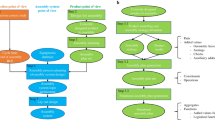Abstract
This paper presents a systematic approach for automatic assembly sequence planning (ASP) by using an integrated framework of assembly relational model (ARM) and assembly process model (APM), which are established by object-oriented method. ARM, consisting of assembly, components and liaisons, is the static model of assembly to describe the geometric relationships between components in terms of contact, constraint and interference matrixes. APM, containing states and sub-processes, is the dynamic model of assembly to represent all potential alternatives in assembly process. An algorithmic procedure is also presented by which APM of an assembly can be constructed systematically by analyzing states from lower levels to higher levels. Through the procedure, all feasible sequences of a product can be generated, and the optimum one can be determined by further evaluating each sequence. To explain the approach more clearly, a practical assembly with five components is used as an illustration in the paper.
Similar content being viewed by others
References
De Fazio TL, Whitney DE (1987) Simplified generation of all mechanical assembly sequences. IEEE J Robot Autom 3(6):640–658
Homen de Mello LS, Sanderson AC (1991) A correct and complete algorithm for the generation of mechanical assembly sequence. IEEE Trans Robot Automat 7(2):228–240
Santochi M, Dini G (1992) Computer-aided planning of assembly operations: the selection of assembly sequences. Robot Comput-Integr Manuf 9(6):439–446
Gottipolu RB, Ghosh K (2003) A simplified and efficient representation for evaluation and selection of assembly sequences. Comput Ind 50:251–264
Gottipolu RB, Ghosh K (1995) Representation and selection of assembly sequences in computer-aided assembly process planning. Int J Prod Res 35(12):3447–3465
Huang HH, Wang MH, Johnson MR (2000) Disassembly sequence generation using a neural network approach. J Manuf Syst 19(2):73–82
Lazerrini B, Marcorllini F (2000) A genetic algorithm for generating optimal plans. Art Int Eng 14:319–329
Laperriere L, El Marghy A (1994) Assembly sequence planning for simultaneous engineering. Int J Adv Manuf Technol 9:231–244
Homen de Mello LS, Sanderson AC (1990) AND/OR graph representation of assembly plans. IEEE Trans Robot Autom 6(2):188–199
Thomas JP, Nissanke N, Baker KD (1996) Hierarchical Petri net framework for the representation and analysis of assembly. IEEE Trans Robot Autom 12(2):268–279
Sinanoglu C, Borklu HR (2004) An approach to determine geometric feasibility to assembly states by intersection matrices in assembly sequence planning. J Int Manuf 15:543–559
Bulinger HJ, Ammer ED (1984) Compter-aided depicting of precedence diagrams: a step towards efficient planning in assembly. Comput Ind Eng 8(3–4):165–169
Waarts JJ, Bonschancher N, Bronsvoort WF (1992) A semiautomatic sequence planner. In: Proceedings of IEEE International Conference on Robotics and Automation, Nice, France, pp 2431–2438
Bourjault A (1984) Contribution à une approach m´ethodologique de I’assemblage automatis´e: Elaboration automatique des s´equences op´eratoires, Thèse d’´etat, Universit´e de Franche-Comt´e, Besancon, France
Hyoung-Ro L, Gemmill DD (2001) Improved methods of assembly sequence determination for automatic assembly systems. Eur J Oper Res 131(3):611–621
Author information
Authors and Affiliations
Corresponding author
Rights and permissions
About this article
Cite this article
Xiaoming, Z., Pingan, D. A model-based approach to assembly sequence planning. Int J Adv Manuf Technol 39, 983–994 (2008). https://doi.org/10.1007/s00170-007-1272-9
Received:
Accepted:
Published:
Issue Date:
DOI: https://doi.org/10.1007/s00170-007-1272-9



